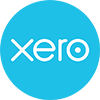The PAYG instalment system allows a business to spread its income tax liability across the tax year. This helps with cash flow, but also means the business is not faced with a large tax bill after the end of the tax year.
Most businesses lodge and pay instalments quarterly. Primary producers and special professionals (e.g. artists, actors and musicians) may be eligible to pay just 2 instalments (the third and fourth instalments). Businesses with instalment income of more than $20 million are required to lodge and pay monthly. Some businesses may pay one annual amount. If you’re unsure how often you need to lodge, our bookkeepers in Melbourne can provide advice and assistance.
Here are the standard quarterly payment dates (although the ATO may automatically grant additional time):
| Quarter | Period | Due date |
| 1 | July-September | 28 October |
| 2 | October-December | 28 February |
| 3 | January-March | 28 April |
| 4 | April-June | 28 July |
Small and Medium Businesses – How Much to Pay
Small and medium businesses (i.e. businesses with an aggregated annual turnover under $50 million) generally have 2 options to work out a quarterly PAYG instalment.
Option 1 – Using the instalment amount. The ATO calculates the amount of each instalment from information reported on the business’ latest tax return. This is the simplest option, as the business doesn’t need to work anything out.
In calculating the instalment amount, the ATO applies what is called the “GDP adjustment factor” to the instalment income (gross business and investment income, excluding GST) reported on the most recent tax return. The adjusted amount is used to calculate the instalment amount.
The GDP adjustment factor for the 2022-23 tax year is 2% (this recently became law). The GDP adjustment factors for 2020-21 and 2021-22 were nil (part of the Government’s economic measures in response to the COVID-19 crisis).
Option 2 – Using the instalment rate. The business works out its instalment amount by multiplying its instalment income by the instalment rate provided by the ATO.
The advantage of using the instalment rate option is that your payments are based on your income as you earn it (for example, in the quarter just gone). This helps with your cash flow management. For example, if your income decreases in a quarter, you apply the instalment rate to that lower income and therefore pay a lower instalment amount.
Varying PAYG Instalments
If your business thinks that its next instalment will be relatively too high or too low when compared to its estimated tax liability for the current tax year, it can vary the instalment on its next activity statement (BAS). A business can vary its instalment amount or rate more than once each tax year.
Now is a good time to check that your business’ PAYG instalments still reflect its expected end of year tax liability. If you’re not sure how, professional bookkeeping accounting services can guide you through this.
Be careful not to underestimate your PAYG instalment amount, income or rate. If you vary your instalments downwards, and it turns out you have a significant tax shortfall at the end of the year (15% or more), you may be charged interest.
However, if your business is affected by COVID-19 or a natural disaster (such as the recent floods in NSW and Queensland), the ATO will not charge interest if the business has made its best attempt to estimate its end of year tax liability.
Talk to Alexander Bright if you want to consider varying a PAYG instalment. We can also assist with bookkeeping services in Melbourne to help you manage other areas of your business.
Managed Accounting Services
Our Newsletter
Article Categories
Select Month
 +61 3 8658 5821
+61 3 8658 5821




